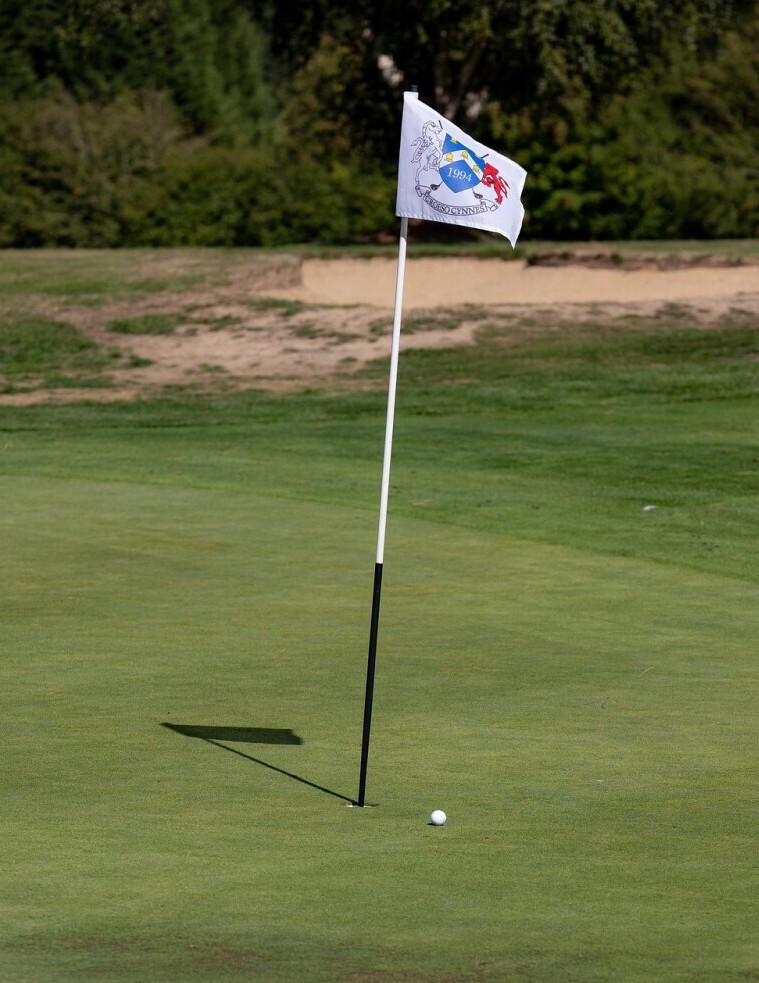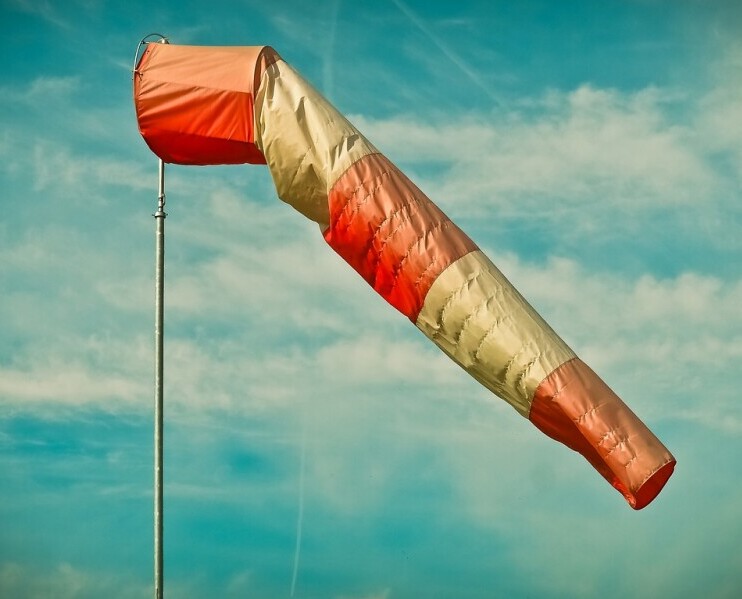How To Golf In Wind


Fore! Quick note: a few links here are affiliate links. If you snag gear through them, I earn a small commission — no extra strokes added to your game.
Golfing on a calm day is one thing, but throw in some wind, and it’s a whole new game. Surprisingly, it’s not just about hitting the ball harder or aiming a little to the left—there’s a subtle art to navigating these gusty challenges. Understanding how the wind impacts every facet of your game is crucial. We’re diving deep today, because wind can cause a major headache on the golf course. So come along with the golf viking on a windy journey.
When you step onto the green, the environment around you plays a significant role. Wind can change direction in a heartbeat, and without the right mindset, it can mess with your head. Adapting your approach, from the moment you tee off until you sink that final putt, is key. It’s important to factor in the wind as soon as you set foot on the course. It will require strategy and even a little luck because wind can be a tricky beast.
Environmental factors are a big deal in golf. Wind speed, direction, and even temperature can affect how the ball travels. It’s not just about reacting to the conditions but anticipating them. A steady breeze or a sudden gust can mean the difference between landing on the fairway or ending up in the rough. Let’s face it, understanding wind dynamics and mastering your response will set you on the path to golfing greatness even when the weather isn’t on your side. So how do we deal with this?
Wind affects ball flight dramatically. To understand how spin and trajectory play into this, read our guide on understanding golf ball spin.
Ready to level up your golf game? Click here.

Essential Tips and Tricks for Golfing in the Wind
Handling windy conditions starts with reading the wind. Pay attention to the way the trees sway, how the flags flutter, and even how your clothing moves. Observing these subtleties can help you predict how the wind will interact with your shots. You will need to do this every hole because wind can change direction and where you are on the course can make a difference.
Positioning the ball is another critical part. When the wind is whipping around, place the ball slightly back in your stance. This adjustment helps lower the ball’s trajectory, giving you better control. A lower flight is less affected by gusts, making it easier to stay on target. Hitting the ball high in the air can make it more susceptible to wind, so you will need to change your stance in order to hit a lower shot to keep your ball on a straight line.
Swing mechanics matter even more when the wind picks up. Using a smoother, more controlled swing can improve stability and precision. Think of it as shortening your swing a bit—less chance for the wind to wreak havoc on your shot. Keep it steady and don’t rush it. Swinging wildly or whipping your driver can put your ball in jeopardy of getting carried by the wind.
Choosing the right club is pivotal. Using one club more than you usually would compensates for the power loss caused by wind resistance. For instance, if you’d typically use a seven-iron, opt for a six instead. This way, you maintain the distance without overexerting yourself. So you will always need to be aware of the direction of the wind out on the course.
If you are hitting into the wind you will want to hit a lengthier club than you normally would. If the wind is at your back you will want to hit a shorter club, so that you don’t launch your ball over the green. If the wind is blowing right you will need to adjust by hitting your ball more left, and vice versa. And of course this will all determine your shot depending on how much wind there is. Small adjustments can be made with a little breeze, whereas big adjustments may need to be made with strong blowing winds.
In essence, let the wind work for you. If it’s blowing from behind, allow it to add some extra yards to your distance. Conversely, when it’s against you, aim lower and swing easier to punch through. Adjust your aim to compensate for crosswinds, helping guide the ball toward your intended target. Working with the wind can lessen its disruptive impact and possibly even help you get your ball into a better spot.
If you want more accuracy when the wind picks up, don’t miss our post on how to increase accuracy in golf.

Strategizing Your Game: Altering Tactics for Windy Days
Club selection becomes a game-changer when playing in the wind. A strong headwind can neutralize your usual distance, so it’s wise to go a club up. If you normally use a five-iron, switch to a four-iron to counter the wind’s resistance. This ensures you still reach your target without overswinging and losing control.
Shot trajectory is something you can’t ignore. Opt for a lower, more penetrating ball flight to cut through the wind. Think of it as delivering a more direct punch. This might mean gripping down on your club and shortening your swing further to keep it low and strong. Hitting it through rather than lofting the ball in the air can serve you well on windy days.
Maintaining balance is crucial for consistency. When the wind is trying to knock you off your game, a stable stance will keep your shots on point. Widen your stance a bit to create a solid base and keep your movements fluid but controlled. Balance isn’t just physical; staying emotionally balanced helps you remain calm and focused even as the wind howls.
Managing your course strategy also shifts. Avoid high-risk shots that could be easily derailed by the wind. Instead, aim for safer areas where the wind’s impact is lessened. Think of it as playing smart, not hard. Sometimes, taking a more conservative approach can save you strokes in these conditions. Sometimes hitting the ball lower into a better position can serve you better than hitting your ball into a dangerous wind that could blow your ball into the pond.
Remember, every shot counts more in windy conditions. Patience and adjustment are your best allies. Take your time setting up each shot, and don’t hesitate to change your plans based on real-time wind shifts. Flexibility in your strategy will help you navigate even the windiest rounds. You now have what you need to help your golf game on even the windiest days. Let’s go over what we’ve learned today, shall we?
Club choice becomes even more important in windy conditions. Check out our post on correct golf stance for irons to improve balance and control.

Conclusion: Embracing the Challenge of Windy Golf
Recapping the essentials, adjusting your golf strategy when the wind picks up is all about preparation, adaptability, and staying calm under pressure. Remember to read the wind, tweak your ball position, and select the right club for the job. It’s not just about swinging harder, but swinging smarter.
Practicing in windy conditions pays off in the long run. Not only does it make you a better golfer, but it also builds resilience and flexibility. You’ll learn to expect the unexpected and handle whatever Mother Nature throws your way. Just having more experience playing will give you a much better idea of how to handle the wind and adjust your game to make the most of it. It’s all part of the game and something you will have to deal with when you golf on a regular basis.
Don’t view a windy day as a hindrance but as an opportunity to refine your skill set. The experiences will enhance your overall game, giving you an edge even when conditions are perfect. And that’s the beauty of golf—it’s as much about overcoming challenges as it is about the game itself. So, next time the wind kicks up, you’ll know exactly how to face it head-on and come out on top. I’ll see you out on the golf course…is it supposed to be windy today?
Lower, more controlled shots often work best in wind. Learn how to do this in our article on what is a punch shot in golf?


